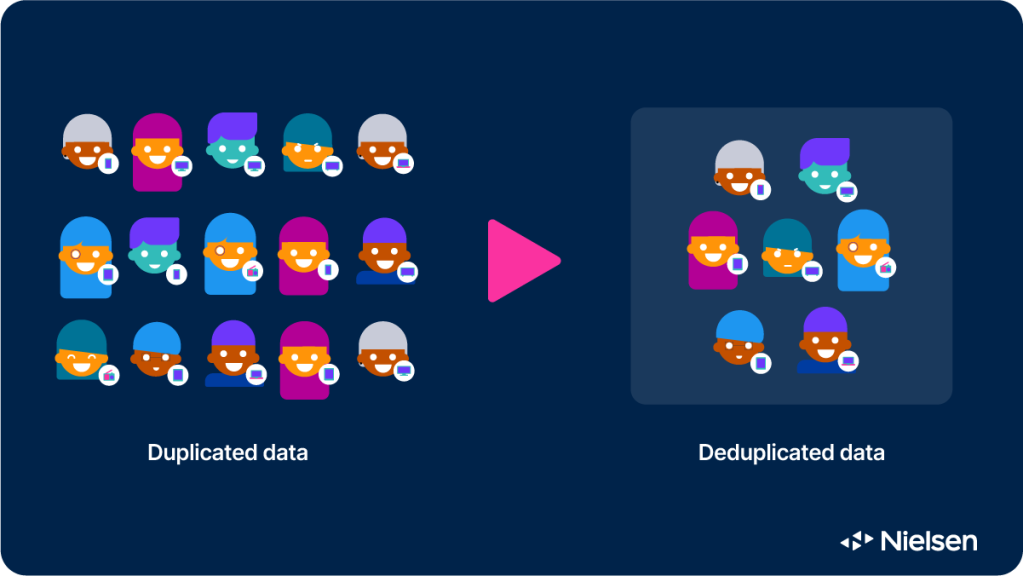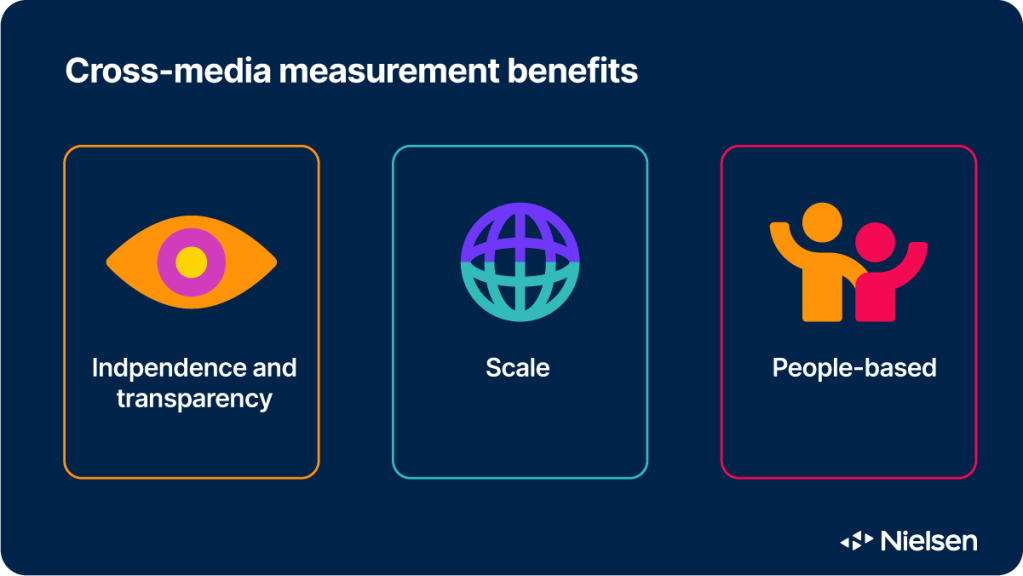When we read about cross-media measurement in the trade press or hear industry leaders talk about it at industry conferences, it’s often presented as a distant dream that will never fully materialize. The media world is always going to outpace our ability to measure it, the thinking goes, and rather than chasing the ultimate solution, advertisers should just focus on one or two channels, embrace their native measurement solutions and trust that they’ve picked the right media partners.
Let’s clear things up.
The media universe has never been more complex
For sure, the media universe is more complex and vastly more fragmented today than it’s ever been. According to research firm Parks Associates, the average U.S. household with internet access owns 17 connected devices. Even if we strike security cameras and wearables from the list, that’s a lot of devices left to read, watch and listen to media content.
Today, there’s TV content on the internet, internet content on TV, and everything in-between. The age of media convergence is a boon for consumers but a big jigsaw puzzle for media buyers and sellers trying to make sense of it.
And every channel comes with its own metrics

What’s an impression in this new world? How do you count viewers across so many devices? How can you tell that you’re not showing the same ad a hundred times to the same person?
New channels rarely define success the same way as their predecessors—at least at first. Digital impressions and clicks were measured very differently from TV GRPs or radio quarter-hour persons when they first came out, and they told a different story, too. Social media pushed the envelope with mid-funnel engagement metrics and raised big questions about what constitutes ad effectiveness in today’s age. Streaming has also revolutionized how the industry measures success, for both content and ads, and accelerated the need to capture viewer engagement regardless of the screen they’re using. And retail media is now drawing everyone’s attention to outcomes-minded metrics.
So many metrics, so little time. Wouldn’t it be easier for brands to avoid all of that complexity and put all their eggs into one media basket?
There’s no media superchannel
Brands need to meet a wide range of objectives with their marketing campaigns—from brand building to sales performance, customer acquisition to retention, loyalty to advocacy. But while some channels like digital display, social media and linear TV are reasonably strong at more than one thing, no channel is dominant across the full funnel.
In our 2024 Annual Marketing Report, we shared that globally, only 36% of media channels perform above average when it comes to delivering both sales and awareness success for a campaign. In the U.S., that’s only 20%.
Only 36% of media channels perform above average for delivering both sales and awareness success
We also analyzed hundreds of campaigns to see how a concentrated focus on a single channel could affect performance and found that those that placed more than 85% of their budget into a single bucket—even one as dynamic as online video or digital network TV—only managed to reach at most 17% of their target audience. Well diversified campaigns, on the other hand, managed to reach 90% of their target audience on CTV, desktop and mobile screens thanks to ad buys across dozens of linear, digital network and online video platforms.
What on-target reach would you rather get with your next campaign: 17% or 90%?
The benefits of cross-media measurement
For advertisers and their agencies, cross-media measurement makes it possible to deduplicate audiences across publishers, calculate reach and frequency, and understand how much each part of the Venn diagram contributes to a campaign’s overall performance. If you were to add Netflix or Hulu to your CTV campaign, would you reach a new segment of the population or the same exact people? Would you improve your on-target performance? Are you even paying a fair CPM for your campaign? The implications for media planning and budgeting are profound.
And cross-media measurement is equally beneficial for platforms and publishers eager to understand the incremental reach their various platforms can offer advertisers and maximize the value of their inventory. In today’s crowded media ecosystem, it’s become increasingly important for media companies to showcase their ability to reach advanced audiences across screens and defend their CPMs.
Cross-media measurement today
It’s all well and good, but is cross-media measurement feasible?
Absolutely. Our own Nielsen ONE solution was built around cross-media measurement, and our clients use it today to determine who is exposed to their ads, on what devices, and what placements are winners and losers out there. They can quickly apply a common set of metrics like reach, frequency and on-target performance across all channels, and use the insights to take action while their campaign is in flight.

- Independence and transparency – To use cross-media data with confidence, you need a measurement partner that’s externally audited and with no vested interest in the media buying equation, and you need to be comfortable with how the data is put together.
- Scale – Choose a partner with visibility into the vast majority of advertising activity (both traditional and digital) in the markets you operate in. Ask about its big data integrations and make sure they include the channels you care about today—and those you might want to explore in the near future.
- People-based – Big data is great, but it needs to be calibrated using reputable panels to reduce bias and data gaps. It also needs to work for you at the person-level because you’re not trying to reach devices, or even households, but real people. Make sure your partner’s cross-media data is representative of the persons you’re trying to reach, and accounts for co-viewing on all the screens they might use to see your campaign.
Cross-media measurement is a constant work in progress—there are new channels and ad formats popping up all the time—but you can reap tremendous benefits from solutions already on the market today. Don’t wait.
Nielsen’s Need to Know reviews the fundamentals of audience measurement and demystifies the media industry’s hottest topics. Read every article here.



